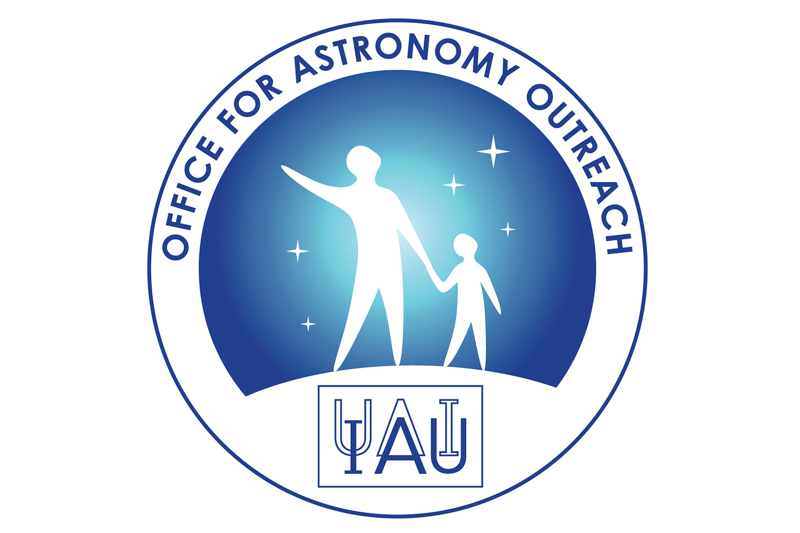International Astronomical Union: Promoting Science & Defining Planets

The International Astronomical Union is a worldwide society of professional astronomers and is considered the authority for assigning names to celestial objects, whether they are planets or moons or other types of worlds, as well as surface features on them. The IAU also provides definitions for different types of objects, such as "what is a planet vs. a dwarf planet."
The IAU, based in Paris, France, has more than 11,000 members. Membership includes national members — organizations that represent a national professional astronomical community — and individual members — professional scientists with doctorate degrees who are active in some branch of astronomy. According to the IAU, the organization's mission is “to promote and safeguard the science of astronomy in all its aspects through international cooperation.” The IAU's main activity is organizing scientific meetings. The IAU sponsors nine symposia every year and also hosts a general assembly every three years.
According to the IAU, the group's tasks include:
- the definition of fundamental astronomical and physical constants
- unambiguous astronomical nomenclature
- promotion of educational activities in astronomy
- informal discussions on the possibilities for future international large-scale facilities
The IAU also works to promote astronomical education, research and public outreach actions toward the public.
However, the IAU's policies have not always pleased those in the scientific community. For example, astronauts and officials during the Apollo missions to the moon in the 1960s and 1970s often named features at the landing sites, but many names were not accepted by the IAU. More recently, the IAU's decision to reclassify Pluto in 2006 caused a worldwide uproar.
History
Multiple sources indicate the IAU first came to be in 1919 through a combination of duties of previous astronomy bodies, such as Carte du Ciel (“Map of the Sky”). The IAU was created during the Constitutive Assembly of the International Research Council that July, which was held in Brussels.
Breaking space news, the latest updates on rocket launches, skywatching events and more!
But according to a 1994 Science article about the IAU written by Harvard astronomer (and IAU member) Owen Gingerich, the motivation for the founding of the IAU was not simply multinational cooperation; scientists also wanted to counteract a prestigious German organization called the Astronomische Gesellschaft, which had astronomers all over the world in its membership.
The IAU was created as a subsidiary of the International Research Council (IRC), which would not accept membership applications from Germany, the main adversary of Allied nations during World War I, which concluded in 1918. When the IRC statutes expired in 1931 and the IAU became part of the International Council of Scientific Unions, Germany made an application — but was denied membership due to the rise of Nazi partisanship in the country. The country wasn't accepted until 1951, six years after the conclusion of World War II.
Other political situations have affected the IAU as well. According to Gingerich, in the 1950s international meetings could not be held in the United States because the government would not admit communists into the country. This policy caused tensions regarding Russian and Chinese scientists.
More recently, the IAU played a key role in the UNESCO International Year of Astronomy in 2009, which the organization says reached more than 800 million people in 148 countries. This led to new outreach organizations with South Africa and Japan.
Pluto and Mars controversies
In 2006, astronomers attending the IAU's General Assembly elected to create a new category of solar system object called a dwarf planet. The official definition essentially says that dwarf planets are round, but not big enough to completely clear their orbital path of debris.
The change would have been a technical one in the public's eyes, given that the name mostly affected lesser-known objects such as Ceres. However, it was the demotion of the planet Pluto to dwarf planet that captured headlines at the time. To this day, not all astronomers agree with the decision.
Alan Stern, the principal investigator of the New Horizons mission to Pluto, pointed out that the debris-clearing part of the definition had troubles for Earth. Specifically, he told Space.com in 2011, if Earth was at Pluto's distance, the vast amount of space to cover in its orbit would make it impossible for Earth to clear the neighborhood — thus making Earth not a planet, either.
But the context of the time is important as well; Mike Brown, an astronomer at the California Institute of Technology, had discovered a few objects far out in the solar system that were similar to Pluto's size or perhaps bigger, with names such as Quaoar and Sedna.
“I spotted each of these oddballs,” Brown wrote in a 2015 Popular Science article. “And each added to the body of evidence that Pluto shouldn’t count as a planet but rather should be dubbed a dwarf planet. It shares an orbit with its Kuiper belt neighbors, unlike the other things we call planets, which orbit solo. Classifying objects properly is a critical first step to understanding how they work and how they formed in the first place.”
More recently, the IAU has butted heads with organizations that are trying to name features themselves. One prominent example was Uwingu (founded by Stern), which in 2014 offered a way — for a fee — to name craters on Mars, but efforts such as Uwingu's were criticized shortly afterward by the IAU.
That said, in 2015 NASA successfully collaborated with the IAU to allow the public to name a few features on Mercury. The occasion was the end of the MESSENGER mission, which impacted the surface in April.
Additional resources

Elizabeth Howell (she/her), Ph.D., was a staff writer in the spaceflight channel between 2022 and 2024 specializing in Canadian space news. She was contributing writer for Space.com for 10 years from 2012 to 2024. Elizabeth's reporting includes multiple exclusives with the White House, leading world coverage about a lost-and-found space tomato on the International Space Station, witnessing five human spaceflight launches on two continents, flying parabolic, working inside a spacesuit, and participating in a simulated Mars mission. Her latest book, "Why Am I Taller?" (ECW Press, 2022) is co-written with astronaut Dave Williams.
